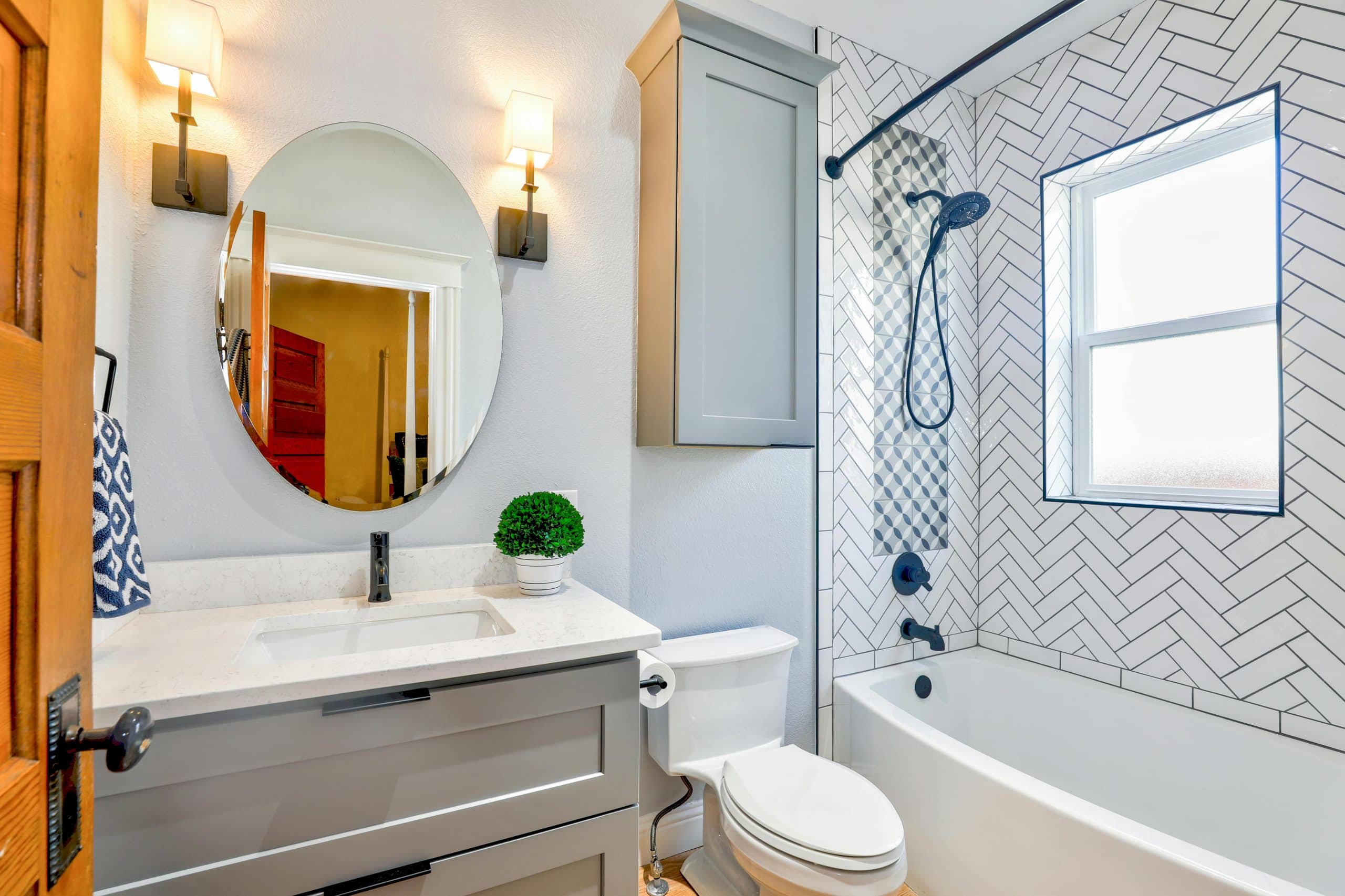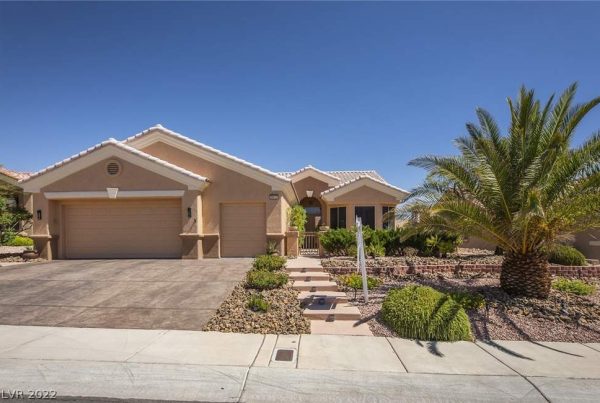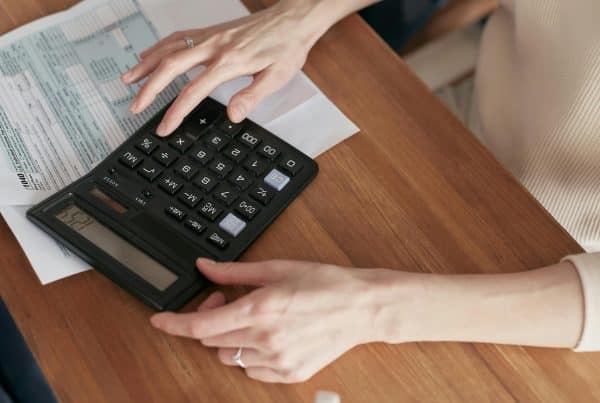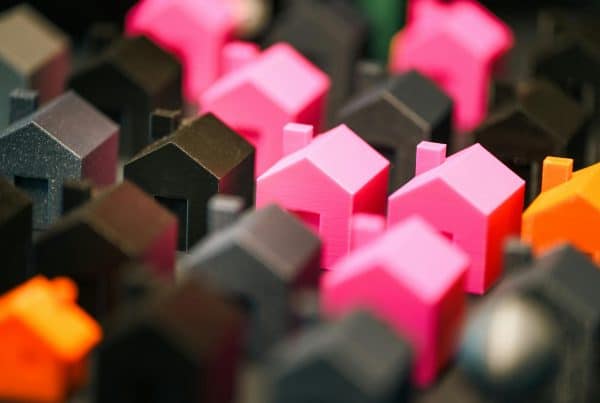A full bathroom remodel can easily hit $10,000 to $20,000. Most homeowners get back less than 60% of that investment when they sell.
But a minor bathroom refresh? That returns over 80% of what you spend.
The difference isn’t about how much you spend. It’s about spending smart on upgrades that actually make your bathroom look and feel more luxurious.
Here’s how to transform a dated bathroom without the gut-job price tag.
Start With Fixtures and Hardware
New fixtures instantly update a bathroom for a fraction of remodel costs.
Replace your faucet, showerhead, and all the hardware (towel bars, toilet paper holder, robe hooks) with matching pieces in the same metal finish.
Mid-tier faucets run $200 to $500 installed. Premium designer faucets cost $500 to $1,000 or more. Accessory hardware sets cost $50 to $150. Dual showerhead systems with rainfall and handheld options run $150 to $400.
Pick one metal family and stick with it throughout the entire bathroom. Your faucet, hardware, and shower fixtures should all match. Brushed nickel, stainless steel, and matte black are the most popular finishes right now.
Mixed metals work as accents in transitional bathrooms—like pairing matte black faucets with brass cabinet pulls—but this requires a careful eye. When in doubt, match everything.
Products that work: Kohler Devonshire Widespread Bathroom Sink Faucet in brushed nickel runs around $300. Moen Genta 3-Piece Bath Hardware Set in matte black costs roughly $100. Delta offers both budget-friendly Foundations line and upscale Sandover decorative hardware.
Make sure your new fixtures meet code. Flow rates should be 1.2 to 1.8 gallons per minute. If your valve cartridges or trim kits behind the wall are old, replace those too so your new fixtures work properly.
Buyers in 2025 expect water efficiency or tech features. Touchless faucets and pressure-balance shower valves stand out. Keep spare parts like aerators and cartridges for future owners.
This upgrade requires no structural work. Many homeowners can handle faucet and hardware replacement themselves, which drops costs significantly.
Upgrade Your Vanity and Countertop
The vanity is the focal point of most bathrooms.
Installing a vanity with a quartz or granite top and dark wood cabinets is the single most cost-effective way to make a bathroom seem more upscale.
Vanity cabinets cost $800 to $3,000 depending on size, style, and materials. Quartz countertops run $50 to $120 per square foot installed. Undermount sink replacement with plumbing adjustments adds $200 to $500.
A complete vanity upgrade typically costs $1,500 to $4,000.
Traditional vanities sit 21 inches deep, but 18-inch-deep vanities are gaining popularity. The narrower depth makes bathrooms feel bigger and makes it easier to lean across the vanity for close-up mirror work.
Slicing three inches off the depth saves $15 to $25 per linear foot on your countertop. That’s $100 in savings on a four-foot vanity.
If you’re replacing your vanity, go taller than the traditional 31 to 32 inch height. Most people prefer 36 inches when given the choice. It’s more comfortable for daily use and feels more modern.
Floating vanities create an airy, modern look and make small bathrooms feel more spacious. The visible floor underneath tricks the eye into seeing more square footage than actually exists.
Choose light or neutral tones to widen buyer appeal. Make sure your plumbing lines align with the new vanity location—moving rough-ins adds significant cost.
Invest in quality drawer glides and soft-close hardware. Buyers open and close vanity drawers and doors during showings. Cheap hardware that slams or sticks signals low quality.
Quartz is overtaking granite in bathroom countertops. It’s more consistent, more durable, and requires less maintenance. The scratch and stain resistance matters in bathrooms where hair products, cosmetics, and hot styling tools live.
Sometimes you can find vanities with granite or quartz tops and dark wood cabinets for around $500 during warehouse sales or seasonal clearance. That’s less than you’d normally pay for the stone top alone. These deals sell out fast, so buy when you see them.
Layer Your Lighting
Most bathrooms rely entirely on overhead lighting. This casts shadows and gives everyone raccoon eyes in the mirror.
The fix is adding light sources at eye level or flanking the mirror.
LED backlit mirrors with integrated lighting and anti-fog features cost $200 to $800. Vanity sconces run $100 to $300 each installed. Recessed LED can retrofits cost $60 to $150 each. Accent lighting strips for toe kicks or under-vanity glow run $50 to $200.
If you’re installing hardwired sconces, expect to pay an electrician $300 to $500 to wire them into your electrical system.
Budget alternative: LED tape lighting kits for $50 to $100 that plug in. Install them under your vanity or along toe kicks where the tape itself isn’t visible. Exposed LED tape looks cheap and tacky. Hidden tape that creates a glow looks intentional and upscale.
Use consistent color temperature throughout your bathroom. 3000K to 3500K is the safe range—that’s warm white. Mixing cool and warm light makes bathrooms look disjointed.
Position lights to avoid face shadowing. Lights should be at eye level or flanking mirrors, not just overhead.
Install dimmer switches so you can adjust lighting intensity. Bright for morning routines, softer for evening relaxation. This spa-like flexibility costs $30 to $50 per dimmer and makes a significant difference in how the space feels.
Layered, ambient lighting is a key trend in luxury bathrooms for 2025. LED mirrors with built-in lighting and defoggers are now considered “budget luxury”—they feel expensive but aren’t.
Good lighting makes every other surface in your bathroom look better. It’s often the most overlooked upgrade and one of the highest impact for the cost.
Refresh Tile and Grout
You don’t have to replace every tile to dramatically improve how your bathroom looks.
Moldy caulk around your tub or sink makes an entire bathroom appear dingy. Scrubbing won’t fix it. Re-caulk as soon as you see discoloration.
Use mildew-proof caulk. A six-ounce tube costs less than $5.
Regrouting deteriorated grout lines costs $5 to $15 per square foot. Accent tile installation for a feature wall or shower niche runs $15 to $40+ per square foot installed. Glass shower door upgrades cost $700 to $1,500. Large solid shower wall panels run $30 to $70 per square foot installed.
If you’re replacing bathroom flooring, choose large format tiles. Porcelain or ceramic tiles in 18 by 18 inches or larger cost $5 to $10 per square foot for quality material. Installation adds $4 to $10 per square foot.
Large tiles cost less to install than small tiles because installers can cover more area faster. They also make small bathrooms feel bigger and require less grout, which means less ongoing maintenance.
Use light-colored grout that cleans easily. Dark grout shows every bit of dirt and discoloration.
Tile drenching—using the same tile from floor to ceiling or across multiple walls—creates cohesive, immersive spaces. This trend dominated luxury bathrooms in 2025 and works in homes at every price point.
Curved or soft-edge tiles and textured or tactile tile surfaces are also gaining popularity, but stick with these only if your bathroom style supports them. Neutral, large format tiles work for the widest range of buyers.
Don’t cut corners on waterproofing behind tile. This isn’t the place to save money. Water damage from failed waterproofing costs thousands to remediate and can kill real estate deals during inspection.
Converting a tub to a shower makes sense if you rarely use the tub and primarily shower. Remove the tub and install a fiberglass shower receptor pan. Standard 60 by 30 inch receptor pans fit into five-foot bathtub alcove spaces.
Complete the conversion with a fiberglass wall surround kit, tile, or solid surface. Add new faucet fixtures.
Contractors typically charge $2,900 to remove the old tub and install the shower pan, walls, and fixtures. That cost doubles if you choose ceramic tile or solid surface like marble. Add $100 for a shower rod and curtain, or $200 to $1,000+ for glass doors depending on style.
If you have carpentry and plumbing experience, you can buy materials for around $1,200 and do it yourself.
Add Strategic Luxury Touches
These finishing touches create wow factor without structural changes.
Heated floors might sound extravagant, but they’re not expensive if you’re already replacing flooring. Electric heating systems installed under tile cost $8 to $15 per square foot.
A typical bathroom heating kit covering 43 square feet runs around $650. Professional electrician installation adds $200 to $400. The system connects to your home’s wiring and controls through a wall-mounted digital thermostat.
Once you experience warm bathroom floors, especially on cold mornings, you’ll consider it money well-spent. This upgrade feels luxurious every single day.
Super-slick enamel toilets have finishes so smooth that waste has nothing to attach to on a microscopic level. These toilets completely flush using just 1.2 gallons of water—much less than older toilets.
This trims about 25% from your home’s water bill, potentially saving $150 per year. You won’t have to scrub the toilet as often because waste doesn’t stick.
Quality super-slick toilets cost around $375. All major toilet manufacturers are working on smoother enamel finishes, so options continue expanding.
Heated towel racks cost $150 to $500 and create that spa-like feeling buyers love. Motion sensor strip lighting for night lights runs $50 to $200.
Smart toilets with heated seats, self-cleaning functions, and night lights cost $500 to $2,000+ depending on brand and features. These require proper rough-in, venting, and water supply, so verify your bathroom can accommodate them before buying.
Choose discreet versions that feel like part of the overall design, not gimmicks. Be careful about over-customizing with features buyers won’t want to maintain.
Spa-inspired bathrooms remain a key trend for 2025. Heated floors, curbless showers, and smart fixtures all appeal to buyers. So do sustainable and tech features like low-flow fixtures, touchless faucets, and smart toilets.
Make sure your electrical system has capacity for these additions and that all bathroom electrical includes proper GFCI protection.
Three Budget-Tiered Approaches
Minor Refresh ($2,000-$8,000) delivers over 80% ROI and works for bathrooms in good condition that need cosmetic updates.
This scope covers new fixtures and hardware ($300-$800), updated lighting ($200-$600), fresh paint and re-caulk ($300-$600), new mirror ($200-$400), and new showerhead ($100-$300).
Timeline: one to two weeks.
Moderate Upgrade ($8,000-$20,000) works for dated bathrooms needing significant visible improvements.
This includes new vanity with quartz top ($2,000-$4,000), new flooring ($1,000-$2,000), lighting upgrades ($500-$1,000), fixture replacements ($800-$1,500), accent tile or regrout ($1,000-$3,000), and paint and finishing ($500-$1,000).
Timeline: two to four weeks.
Premium Touches ($20,000+) add heated floors, smart toilets, and luxury materials.
Warning: ROI per dollar drops when upgrades become overly custom. Only invest at this level in high-end homes where buyers expect luxury features and comparable homes show them.
Timeline: three to six weeks.
Risk: You may not recoup your full investment unless your neighborhood supports pricing at this level.
Las Vegas-Specific Bathroom Considerations
Las Vegas Valley water measures 291 ppm hardness—the same hard water that affects kitchen fixtures also impacts bathrooms.
Mineral buildup appears on faucets, showerheads, and glass shower doors. Before showings and definitely before listing photos, descale aerators on all faucets, clean shower heads, and polish all chrome or stainless surfaces.
If your fixtures are pitted from mineral buildup, replace them. New fixtures signal well-maintained to buyers. Pitted, stained fixtures signal neglect even when everything else is perfect.
Consider a whole-house water softener if hard water has caused significant buildup throughout your home. The investment protects all your fixtures and makes cleaning easier.
The low humidity in Las Vegas creates less mold risk than humid climates—that’s an advantage. But dust accumulation is still significant, and grout and tile sealing remain important.
What Not to Do
Some bathroom upgrades waste money.
Pedestal sinks look elegant in photos but provide zero storage. Buyers need somewhere to stash toiletries, cleaning supplies, and spare toilet paper. A pretty sink without storage frustrates daily users.
If space is extremely limited and a pedestal sink is your only option, install cabinets above the toilet to recover lost storage.
Mixing too many metal finishes reads as indecisive or unfinished. Pick one finish family and use it throughout the bathroom.
Over-customizing with unusual colors, patterns, or features narrows your buyer pool. Bold personal style choices work in your home while you live there, but cost you money when you sell.
Ignoring waterproofing behind tile to save a few hundred dollars can cost thousands in water damage repairs later.
Skipping cabinet rehab when installing new countertops doesn’t work. A new quartz top on old, worn cabinets fools no one. If cabinets are dated, paint them white and add new hardware before installing new counters.
Buying wrong-sized fixtures before measuring your rough-ins creates expensive rework. Always measure first.
Proper Work Sequence
Follow the right order to avoid paying twice.
Start with demo or removal if you’re replacing the vanity or flooring. Handle any rough plumbing or electrical updates next.
If adding heated floors, install the system before flooring goes down. Install flooring, then the vanity, then template and install countertops.
Complete tile work for backsplashes or accent walls. Install fixtures (faucets, shower, toilet), then lighting, then hardware and accessories.
Finish with paint touch-ups, grout sealing, final cleaning, and staging.
Doing work out of sequence means earlier steps damage later ones and you pay twice for the same work.
Staging Your Bathroom for Photos
Clear all counters completely. Remove toothbrushes, medications, razors, and all personal items.
Use white towels only, precisely folded or rolled. Add one decorative element maximum—a small plant or candle. More than that reads as clutter.
Clean mirrors until spotless. Turn on all lights. If you have a shower curtain, open it. If you have glass, make sure it’s crystal clear.
Hide trash cans and remove bath mats. Fresh flowers are optional but keep minimal.
The goal is showing potential, not personality. Buyers need to envision their stuff in your bathroom, not admire yours.
Why This Approach Works
Strategic bathroom upgrades deliver luxury feel at a fraction of full remodel cost.
Minor refreshes return over 80% of investment. You get an updated, appealing bathroom that helps sell your home without the $10,000 to $20,000 price tag of a full renovation.
Updated bathrooms signal well-maintained homes to buyers. They photograph better for online listings. They reduce buyer objections during showings and inspections.
Most importantly, these upgrades focus on what buyers actually notice and care about: fixtures that work well and look current, adequate storage, good lighting, clean surfaces, and modern touches that feel special.
You’re not trying to create a magazine-cover bathroom. You’re creating a bathroom that works beautifully every day and appeals to the widest range of buyers when it’s time to sell.
Key Takeaways
- Minor bathroom refresh returns over 80% vs. under 60% for full remodels
- Start with fixtures and hardware ($400-$1,000)—highest impact for lowest cost
- Vanity with quartz top and dark wood cabinets ($1,500-$4,000) is single most effective upgrade
- Layer lighting with sconces or LED mirrors ($300-$1,000) to eliminate shadows
- Large format tiles (18×18 inches) cost less to install and make rooms feel bigger
- Heated floors ($8-$15/sq ft) feel luxurious daily if replacing flooring anyway
- Super-slick toilets ($375) save $150/year on water and reduce cleaning
- Stick to one metal finish throughout bathroom for cohesive look
- Address Las Vegas hard water with descaling and fixture replacement if pitted
- Budget $2,000-$8,000 for minor refresh, $8,000-$20,000 for moderate upgrade
Frequently Asked Questions
What’s the most cost-effective bathroom upgrade? Installing a vanity with a quartz or granite top and dark wood cabinets is the single most impactful upgrade for the cost. This transformation makes bathrooms seem instantly more upscale. Complete vanity upgrades typically cost $1,500 to $4,000. During sales, you can sometimes find quality vanities with stone tops for around $500—less than the stone top alone normally costs.
Should I choose a floating vanity or traditional vanity? Floating vanities create an airy, modern look and make small bathrooms feel more spacious. The visible floor underneath tricks the eye into seeing more square footage. They’re trending for 2025. Traditional vanities often provide more storage. Choose floating if you want a modern aesthetic and have adequate storage elsewhere. Choose traditional if storage is your priority.
How much does bathroom lighting really matter? It’s often the most overlooked upgrade and one of the highest impact for cost. Most bathrooms rely on overhead lighting that casts shadows and gives unflattering light. Adding sconces at eye level or an LED backlit mirror ($200-$800) transforms how the entire space looks and feels. Good lighting makes every other surface look better and creates that spa-like atmosphere buyers want.
Are heated bathroom floors worth the cost? Yes, if you’re already replacing your flooring. Electric heating systems cost $8 to $15 per square foot installed. A typical kit covering 43 square feet runs around $650, plus $200 to $400 for electrician installation. Once you experience warm floors on cold mornings, you’ll consider it money well-spent. This upgrade feels luxurious every single day and appeals strongly to buyers.
What size tiles should I use in a small bathroom? Large format tiles—18 by 18 inches or bigger—make small bathrooms feel more spacious. They cost less to install because professionals can cover more area faster. They require less grout, which means less maintenance. Quality porcelain or ceramic in large formats costs $5 to $10 per square foot, plus $4 to $10 per square foot installation.
Is it worth converting a bathtub to a shower? If you rarely use the tub and primarily shower, yes. Removing the tub and installing a shower with a low step-over threshold costs around $2,900 with a contractor for a fiberglass shower pan, wall surround, and fixtures. That doubles if you choose tile or solid surface. The conversion makes the bathroom safer and more functional if you don’t actually use the tub.
Should I replace my toilet? Replace it if it’s old, inefficient, or stained. Super-slick enamel toilets (around $375) have finishes so smooth that waste doesn’t stick on a microscopic level. They flush completely with just 1.2 gallons, potentially saving $150 per year on water bills and reducing cleaning frequency. Smart toilets with heated seats and self-cleaning functions ($500-$2,000+) appeal to tech-savvy buyers but require proper rough-in.
What bathroom fixtures finish is most popular in 2025? Brushed nickel, stainless steel, and matte black are the top finishes. Matte black is gaining popularity as a modern alternative to chrome. Pick one metal family and use it consistently throughout your entire bathroom—faucets, hardware, shower fixtures should all match. Mixed metals work as accents in transitional styles but require a careful design eye.
How do I deal with hard water buildup in Las Vegas? Las Vegas water measures 291 ppm hardness. Before showings, descale faucet aerators and showerheads, clean glass shower doors thoroughly, and polish all chrome or stainless surfaces. If fixtures are pitted from mineral buildup, replace them—new fixtures cost $200-$500 and signal well-maintained to buyers. Consider a whole-house water softener if buildup is significant throughout your home.
What’s a reasonable budget for a bathroom refresh? Minor refresh with fixtures, lighting, paint, and hardware costs $2,000 to $8,000 and returns over 80% ROI. This works for bathrooms in good condition needing cosmetic updates. Moderate upgrades with new vanity, countertop, flooring, and tile work run $8,000 to $20,000. Only invest in premium touches ($20,000+) if you’re in a high-end market where buyers expect luxury features and comparable homes show them.






